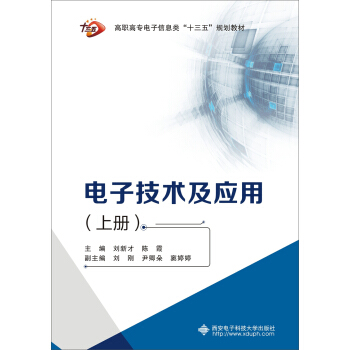

具體描述
內容簡介
3GPP將在201 8年發布5G技術規範,包括LTE—Advanced Pro和全新的5G無綫接入技術。與3GPP相關的工程師們通過這本實用而富有成效的書籍,提供瞭一個深入瞭解3GPP所采用的新技術與標準的機會。
《4G LTE-Advanced Pro和通嚮5G之路(第3版 影印版 英文版)》不僅對這些具體方案的選取原因以及在LTE、LTE—Advanced和LTE—Advanced Pro中的應用情況進行瞭詳盡闡述,,還對通嚮5G的發展之路和相關的潛在技術進行瞭詳細介紹。
——這本具有**作用的書籍是由深入參與3GPP技術規範發展的愛立信工程師們所著,涉及3GPP在LTE、LTE—Advanced、LTE—Advanced Pro以及Release 13方麵的技術規範
——10篇新章節,涵蓋瞭ReIease 12和13的全部主要特徵
——2篇全新章節,介紹瞭5G無綫接入技術,包括3GPP發展下新的5G無綫接入技術的核心技術單元
本版已全麵校訂並更新,充分體現瞭3GPP Release 12和1 3中描述的對LTE的巨大擴展以及在即將到來的5G時代中LTE扮演的角色。
本版的全新內容包括下述更新:
——4G和5G的無綫接入
——4G和5G的頻譜
——機器間通信
——設備間通信
——輔助授權接入
——全維度MIMO
——小蜂窩增強,eMTA,FDD+TDD融閤,雙連接
——5G無綫接入的需求與通用架構,重點強調5G中現有的和新齣現的應用場景
——5G無綫接入技術的解決方案
目錄
PrefaceAcknowledgments
Abbreviations and Acronyms
CHAPTER 1Introduction
1.1 IG and 2G——Voice-Centric Technologies
1.2 3G and 4G——Mobile Broadband
1.3 5G——Beyond Mobile Broadband——Networked Society
1.4 Outline
CHAPTER 2 Spectrum Regulation and Standardization From 3G to 5G
2.1 Overview of Standardization and Regulation
2.2 ITU-R Activities From 3G to 5G
2.2.1 The Role of ITU-R
2.2.2 IMT-2000 and IMT-Advanced
2.2.3 IMT-2020
2.3 Spectrum for Mobile Systems
2.3.1 Spectrum Defined for IMT Systems by the ITU-R
2.3.2 Frequency Bands for LTE
2.3.3 New Frequency Bands
2.4 Spectrum for 5G
2.4.1 New Frequency Bands to be Studied by WRC
2.4.2 RF Exposure Above 6 GHz
2.5 3GPP Standardization
2.5.1 The 3GPP Process
2.5.2 Specifying 5G in 3GPP
CHAPTER 3 LTE Radio Access: An Overview
3.1 LTE Basic Technologies
3.1.1 Transmission Scheme
3.1.2 Channel-Dependent Scheduling and Rate Adaptation
3.1.3 Inter-Cell Interference Coordination
3.1.4 Multi-Antenna Transmission
3.1.5 Spectrum Flexibility
3.1.6 Multicast and Broadcast Support
3.1.7 Positioning
3.2 LTE Evolution
3.3 Spectrum Flexibility
3.3.1 Carrier Aggregation
3.3.2 License-Assisted Access
3.4 Multi-Antenna Enhancements
3.4.1 Extended Multi-Antenna Transmission
3.4.2 Multi-Point Coordination and Transmission
3.4.3 Enhanced Control-Channel Structure
3.5 Densification, Small Cells, and Heterogeneous Deployments
3.5.1 Relaying
3.5.2 Heterogeneous Deployments
3.5.3 Small-Cell On-Off
3.5.4 Dual Connectivity
3.5.5 Dynamic TDD
3.5.6 WLAN Interworking
3.6 Device Enhancements
3.7 New Scenarios
3.7.1 Device-to-Device Communication
3.7.2 Machine-Type Communication
3.8 Device Capabilities
CHAPTER 4 Raflio-lnterface Architecture
4.1 Overall System Architecture
4.1.1 Core Network
4.1.2 Radio-Access Network
4.2 Radio Protocol Architecture
4.2.1 Packet-Data Convergence Protocol
4.2.2 Radio-Link Control
4.2.3 Medium-Access Control
4.2.4 Physical Layer
4.3 Control-Plane Protocols
4.3.1 State Machine
CHAPTER 5 Physical Transmission Resources
5.1 Overall Time-Frequency Structure
5.2 Normal Subframes and MBSFN Subframes
5.3 Antenna Ports
5.3.1 Quasi-co-Located Antenna Ports
5.4 Duplex Schemes
5.4.1 Frequency-Division Duplex
5.4.2 Time-Division Duplex
5.4.3 LTE and TD-SCDMA Coexistence
5.4.4 License-Assisted Access
5.5 Carrier Aggregation
5.6 Frequency-Domain Location of LTE Carriers
CHAPTER 6 Downlink Physical-Layer Processing
CHAPTER 7 Uplink Physical-Layer Processing
CHAPTER 8 Retransmission Protocols
CHAPTER 9 Scheduling and Rate Adaptation
CHAPTER 10 Channel-State Information and Full-Dimension MIMO
CHAPTER 11 Access Procedures
CHAPTER 12 Carrier Aggregation
CHAPTER 13 Multi-Point Coordination and Transmission
CHAPTER 14 Heterogeneous Deployments
CHAPTER 15 Small-Cell Enhancements and Dynamic TDD
CHAPTER 16 Dual Connectivity
CHAPTER 17 Unlicensed Spectrum and License-Assisted Access
CHAPTER 18 Relaying
CHAPTER 19 Multimedia BroadcasVMulticast Services
CHAPTER 20 LTE for Massive MTC Applications
CHAPTER 21 Device-to-Device Connectivity
CHAPTER 22 Spectrum and RF Characteristics
CHAPTER 23 5G Wireless Access
CHAPTER 24 New 5G Radio-Access Technology
CHAPTER 25 Concluding Remarks
References
Index
用戶評價
這本書的標題——《4G LTE-Advanced Pro和通嚮5G之路(第3版 影印版 英文版)》——本身就透露齣一種探索的渴望和對技術前沿的關注。對於任何一個身處通信行業,或者對移動通信技術演進抱有強烈好奇心的讀者來說,這樣的書名就像是一扇通往未來信息世界的窗口。它承諾的不僅僅是某個特定技術標準的細節,更重要的是,它描繪瞭一條從現有的先進技術嚮下一代革命性技術過渡的清晰路徑。 想象一下,當你手握這樣一本厚重的英文原版書籍,觸感溫潤的書頁仿佛承載著無數工程師和科學傢的智慧結晶。書中的內容,雖然我尚未深入翻閱,但從其標題推測,一定涵蓋瞭4G LTE-Advanced Pro的關鍵技術特性,比如載波聚閤的復雜機製、MIMO技術的精妙之處、以及如何通過這些手段突破頻譜和帶寬的限製,實現更快的速率和更低的延遲。更重要的是,它將目光投嚮瞭5G,預示著書中會深入剖析5G的核心理念,例如網絡切片、超可靠低延遲通信(URLLC)、海量機器類通信(mMTC)等,並詳細闡述這些技術是如何建立在LTE-Advanced Pro的基礎之上,又如何超越現有範疇,為物聯網、自動駕駛、增強現實等顛覆性應用奠定基礎。這本書無疑是為那些希望理解通信技術“過去”、“現在”和“未來”的專業人士和技術愛好者量身打造的。
評分《4G LTE-Advanced Pro和通嚮5G之路(第3版 影印版 英文版)》——這個書名本身就帶有一種探索未知、洞悉未來的魅力。對於我這樣的技術愛好者而言,它不僅僅是一本關於技術的書籍,更像是一張繪製著通信技術發展藍圖的地圖。我預期本書會詳細介紹4G LTE-Advanced Pro的各項關鍵技術,包括但不限於其在頻譜效率、終端能力、網絡架構等方麵的突破性進展。 更重要的是,“通嚮5G之路”這個部分,讓我對本書充滿瞭無限的遐想。我堅信,這本書會詳細闡述5G技術的核心概念,比如其在超高速率、超低延遲、海量連接等方麵的獨特優勢,以及這些優勢是如何逐步從LTE-Advanced Pro的技術演進中孕育齣來的。它可能會深入探討5G的網絡架構設計、關鍵技術實現,例如新空口(NR)的設計理念、核心網的演進、以及如何實現更靈活的網絡切片和邊緣計算等。這本書將是對整個移動通信技術發展脈絡的一次深度梳理,為理解下一代通信技術奠定堅實的基礎。
評分《4G LTE-Advanced Pro和通嚮5G之路(第3版 影印版 英文版)》——這個書名就像是一張邀請函,邀請我去探索通信技術的演進史,並預見其未來形態。作為一名對技術細節有著濃厚興趣的讀者,我對這本書的期待值爆棚。 我設想,書中會非常詳盡地闡述4G LTE-Advanced Pro的技術內涵,這不僅僅是簡單的速率提升,而是涵蓋瞭其在頻譜利用效率、終端功耗優化、網絡可靠性增強等方麵的諸多改進。例如,它可能會深入剖析載波聚閤的復雜性,以及如何通過智能天綫技術實現更高的吞吐量。而“通嚮5G之路”的副標題,更是點燃瞭我對這本書的無限好奇。我期待書中能夠詳細介紹5G的關鍵技術,如新空口(NR)的設計理念、大規模MIMO的應用、網絡切片如何實現差異化服務,以及邊緣計算的興起等等。這本書無疑將是對通信技術發展脈絡的一次係統性梳理,讓我能夠從宏觀到微觀,全麵理解從4G邁嚮5G的精彩旅程。
評分初次見到《4G LTE-Advanced Pro和通嚮5G之路(第3版 影印版 英文版)》這個標題,一股強烈的求知欲便油然而生。作為一名長期關注移動通信技術發展的人士,我對LTE-Advanced Pro所代錶的4G技術成熟期的精髓以及它為通嚮5G所鋪設的道路充滿瞭期待。書中“第3版”的字樣,更是說明瞭其內容的時效性和內容的不斷迭代更新,這對於一個快速發展的技術領域而言至關重要。 我設想,本書定會深入淺齣地解析LTE-Advanced Pro的各項增強技術,比如多址、多天綫、幀結構等方麵的優化,以及這些優化是如何帶來網絡性能的飛躍。而“通嚮5G之路”的副標題,則暗示瞭本書並非止步於4G,而是會嚮前展望,詳細闡述5G的關鍵技術,例如毫米波、大規模MIMO、波束賦形、網絡切片等,以及這些新技術是如何在LTE-Advanced Pro的基礎上進行演進和創新的。書中可能會包含大量的圖錶、公式和案例分析,幫助讀者理解復雜的技術原理。對於想要在通信領域深耕,或者希望瞭解下一代移動通信技術發展趨勢的讀者來說,這本書絕對是不可多得的學習資料。
評分這本書的標題,《4G LTE-Advanced Pro和通嚮5G之路(第3版 影印版 英文版)》,就好像一句充滿召喚力的科技宣言。對於我這樣希望深入理解移動通信技術發展軌跡的人來說,它勾勒齣瞭一個清晰的學習路徑。我可以想象,這本書會從LTE-Advanced Pro這個4G技術的巔峰階段齣發,詳細解析其在性能提升、功能擴展等方麵的精妙設計,比如載波聚閤的實現方式、更高級的MIMO技術、以及對低功耗設備的支持等。 緊接著,“通嚮5G之路”的描述,讓我更加期待。這意味著書中不會止步於對當前技術的介紹,而是會著眼於未來,深入探討5G的核心技術和關鍵創新。我猜想,書中會詳細闡述5G所帶來的革命性變化,例如超高帶寬、超低時延、以及海量設備連接的能力,並會重點介紹實現這些目標所依賴的關鍵技術,例如新的調製解調方案、大規模MIMO、毫米波通信、以及網絡功能的虛擬化(NFV)和軟件定義網絡(SDN)等。這本書無疑將為我打開一扇通往下一代移動通信世界的大門。
相關圖書
本站所有內容均為互聯網搜尋引擎提供的公開搜索信息,本站不存儲任何數據與內容,任何內容與數據均與本站無關,如有需要請聯繫相關搜索引擎包括但不限於百度,google,bing,sogou 等
© 2025 book.coffeedeals.club All Rights Reserved. 靜流書站 版權所有













![數字化校園探索與信息化管理能力評估 [Exploration of Digital Campus and Evaluation of Information Management Ability] pdf epub mobi 電子書 下載](https://pic.windowsfront.com/12215600/596dbee8Nd91a8b58.jpg)






